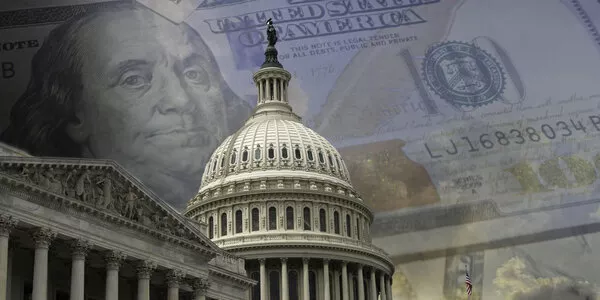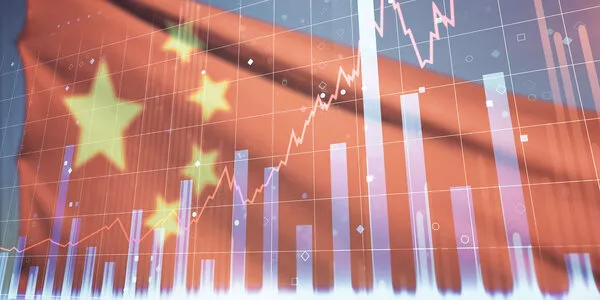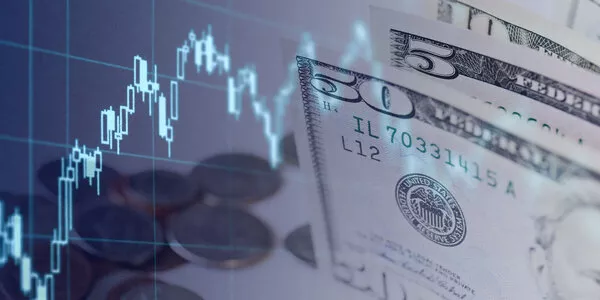
Weekly Update - Mid-year review: outlook disrupted by economic policies
A radical change in tone has taken place in the United States. In particular, President Trump has increased tariffs to levels not seen in decades. Although uncertainty persists about the target level, the first effects are already noticeable. First of all, there is an anticipatory effect of these tariffs, resulting in a massive increase in American imports before April. This situation penalised activity in the first quarter, which contracted by -0.5% on an annualised basis. In addition, domestic demand grew by around 1.5% in the second quarter, marking a sharp slowdown from a rate of more than 2.5% in 2024. At this stage, the increase in customs duties is not reflected in inflation, which fell to 2.4% in May, due to a wait-and-see attitude in the face of uncertainties about the level of tariffs, a destocking behaviour of companies and a sharper than expected disinflation in some service sectors. However, rising inflation expectations prompted the Federal Reserve to maintain a monetary status quo, with rates stable at 4.25-4.50%.
In contrast to the US figures, the economies of Asia and the euro area posted better-than-expected GDP growth, benefiting from a temporary positive effect on exports. China recorded growth of 5.4% in the first quarter of 2025, supported by a strong contribution from industry and exports. This phenomenon is also observable in the euro area, where GDP growth reached 2.4% (annualised) in the first quarter of 2025. Finally, although past data shows resilience in activity, surveys are less optimistic for Q2, especially with regard to new order estimates, which are down.
We are witnessing a certain "European awakening", encouraged by the change in American tone, with announcements of economic support policies on a potentially massive scale. The new German chancellor, Mertz, has thus profoundly reoriented his initial policy, by reforming the debt brake (which potentially represents hundreds of billions) and by validating a €500 billion plan over 12 years for defence and infrastructure. At the same time, the ReArm Europe plan could mobilise several hundred billion euros to comply with NATO's objectives. At the same time, the European Central Bank has made four rate cuts (thus desynchronizing with the Fed), bringing the rate to 2%, while inflation continues to slow.
Finally, despite new geopolitical tensions (Ukraine, Israel/Iran), the price of oil fell sharply, due to OPEC+ overproduction and moderating demand, against a backdrop of a slowdown in global activity.
Markets are experiencing high volatility but are posting positive returns. European equity markets clearly stand out, with very favourable performances, particularly for the German and Spanish markets. US markets are underperforming overall but have recently reached new all-time highs, supported by strong corporate results. Long-term rates reacted in the opposite direction of central banks. US long-term rates have fallen moderately over the first half of the year, in line with fears of a slowdown in growth, while European long-term rates have held up due to expectations of higher issuances to finance stimulus plans. Overall, the dollar remains the variable most affected by this change in political tone, penalised by a reassessment of the place of US assets in global portfolios.
We expect the slowdown to continue in the second half of the year, while ruling out the scenario of too much "brakes". We maintain our overweight in European equity and credit markets, which will benefit from supportive policies and still attractive valuations. In addition, we remain broadly balanced between equities and bonds, while remaining negative on the dollar and on the US sovereign bond markets.
Other highlights of the week
In the highlights of the week, we chose to talk about the presentation of the German budget by the government, the target of 3.5% of GDP for defense decided by NATO, as well as the impact on the markets of the Israel-Iran war.
German budget. On Tuesday 24 June, the German government presented its detailed draft budget for the rest of 2025. Until now, Germany had only a provisional budget for this year, due to the collapse of the previous ruling coalition. The amount of investments will rise to 115.7 billion euros for the year as a whole, compared to 74.5 billion in 2024. The defense budget will reach €62.4 billion (+20% compared to 2024), representing 2.4% of GDP. In addition, 24 billion euros will come from the Bundeswehr Special Fund (created in 2022). To finance these increases, Germany will contract 143 billion in debt, representing a deficit of 3.3% of GDP in 2025. This debt is made possible by the special fund of 500 billion euros over 12 years and by the lifting of the debt brake.
NATO: A target of 3.5% of GDP for defense. On Wednesday 25 June, the North Atlantic Treaty Organisation set a target of 3.5% of GDP for defense. In addition, 1.5% of related expenses are involved, involving security in the broad sense. The target is set for 2035. In France, President Macron had pushed the target from 3 to 3.5% of GDP. The government will present its main budgetary guidelines in mid-July, while deficit control is a matter of concern.
Israel-Iran war: markets little disrupted. So far, markets have been only slightly disrupted by the ongoing conflict. The price of Brent has only risen by about $10 since the start of the conflict, before falling back down since June 19. The US strikes of 21 June did not worry investors too much, given they did not target oil sites. Since June 13, the date of the first Israeli strikes, gold has fallen by 4%, to $3,284 per ounce. As a reminder, Iran accounts for about 5% of the world's oil production. While a ceasefire has been in place since 25 June, the closure of the Strait of Hormuz, where nearly 20% of the world's oil production passes, seems unlikely at this stage.





